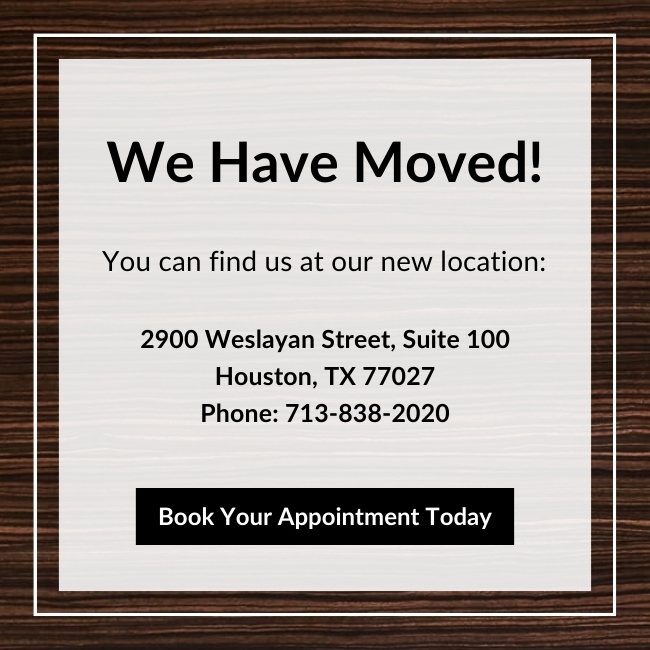June is Cataract Awareness Month.
DYK cataracts are the leading cause of vision loss in the United States? 24 million Americans over the age of 40 are affected by cataracts. Cataracts are the leading cause of blindness in the world.
What are cataracts?
Cataracts are a clouding of the lens inside the eye. The crystalline lens (similar to a camera lens) is an elastic structure that helps focus light onto the retina. When the lens is transparent, light easily focuses on the retina. However, as the crystalline lens starts to change color and becomes opaque, the quality of vision begins to decline.
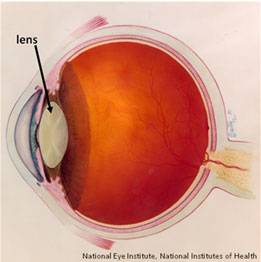
Increased night-time glare from car headlights, less vibrant colors, clouding of vision, and increasing difficulty with vision at night are only some of the symptoms of cataracts.
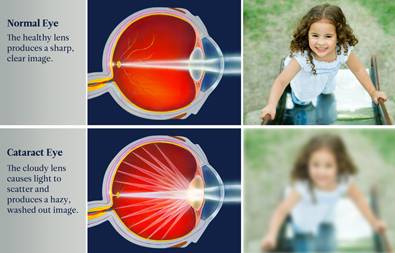
What causes cataracts?
The majority of cataracts are due to age-related changes that cause the crystalline lens in the eye to become cloudy or opaque. However, other factors can contribute to cataract development, including but not limited to:
- Diabetes Mellitus
- Certain medications: Corticosteroids, Chlorpromazine, and other phenothiazine-related medications
- Ultraviolet radiation
- Smoking
- Alcohol
- Nutritional Deficiency
- Ocular Trauma
Who do cataracts affect?
Cataracts can affect people of all ages, but the most common type of cataract is an Age-Related Cataract. This type of cataract develops over a long period of time and often affects those over the age of 40. The National Eye Institute reports that “the risk of cataract increases with each decade of life starting around age 40. By age 75, half of white Americans have a cataract. By age 80, 70 percent of whites have a cataract compared with 53 percent of blacks and 61 percent of Hispanic Americans.”

Cataract Removal
Cataract surgery is the most performed surgery in the United States. It is a relatively safe procedure with a 95% success rate. The surgeon removes the cloudy lens and replaces the crystalline lens with an intraocular lens (IOL). Cataract surgery is often performed as an out-patient procedure, so it does not usually require an overnight stay in the hospital.
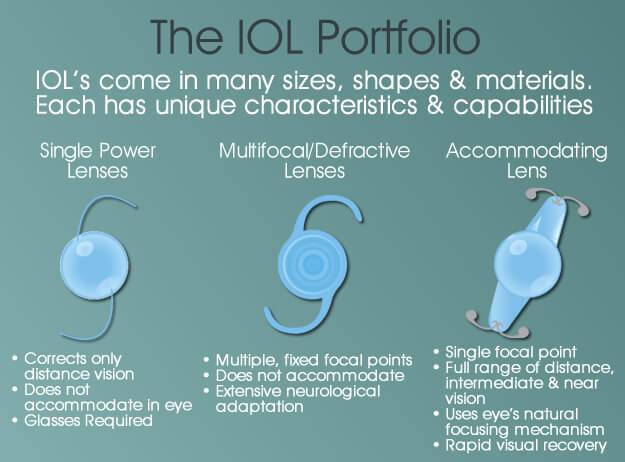
With the advancement of technology, there are many IOL options available. Different IOL corrective options include: nearsightedness, farsightedness, astigmatism, and/or multifocal. These speciality IOLs help to reduce your amount of reliance on glasses after cataract surgery.
Most recently, several femtosecond lasers have been FDA-approved for use in what is now known as “laser assisted cataract surgery”. These lasers are similar to the ones used to create the corneal flap in LASIK procedures. Laser assisted cataract surgery helps the surgeon improve surgical accuracy.
Cataract Prevention

There currently is no proven way to get prevent cataract formation; however, there are methods we can employ to slow down the progression of cataracts including but not limited to: wearing proper UV protective sunglasses while outdoors, maintaining a healthy diet and eating lots of foods rich with antioxidants and omega-3.
Some types of cataracts, like traumatic cataracts, may be preventable. As evidenced by the name, traumatic cataracts are a result of blunt or penetrating ocular trauma to the crystalline lens.
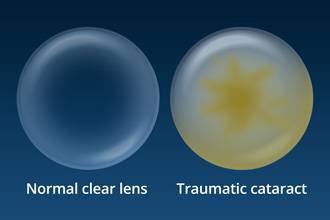
Traumatic cataracts can often be prevented by wearing proper safety glasses. Essilor Prescription Safety Eyewear manufactures prescription and non-prescription safety eyewear that meets all the latest ANSI Z87.1-2015 standards.

If you think you may have cataracts, it is important to get your eyes examined annually. Your eye doctor will be able to help you determine whether or not your cataracts are ready to be removed. They will also be able to determine which IOL will best help to improve your lifestyle.
Need to schedule your annual examination or need safety eyewear for work? Give us a call today: 713-838-2020.
| About the Author Dr. Erica Ngo, O.D. is an optometrist fascinated by dry eye disease, ocular surface disease, and digital eye health. Dr. Erica Ngo is passionate about protecting and preserving eye health with a focus on aesthetics, makeup, and fashion. On her free time she enjoys latin dancing, food, travelling, and playing with her fluffy companion. She lives in Houston and is always looking for ways to explore and give back to her community. |


